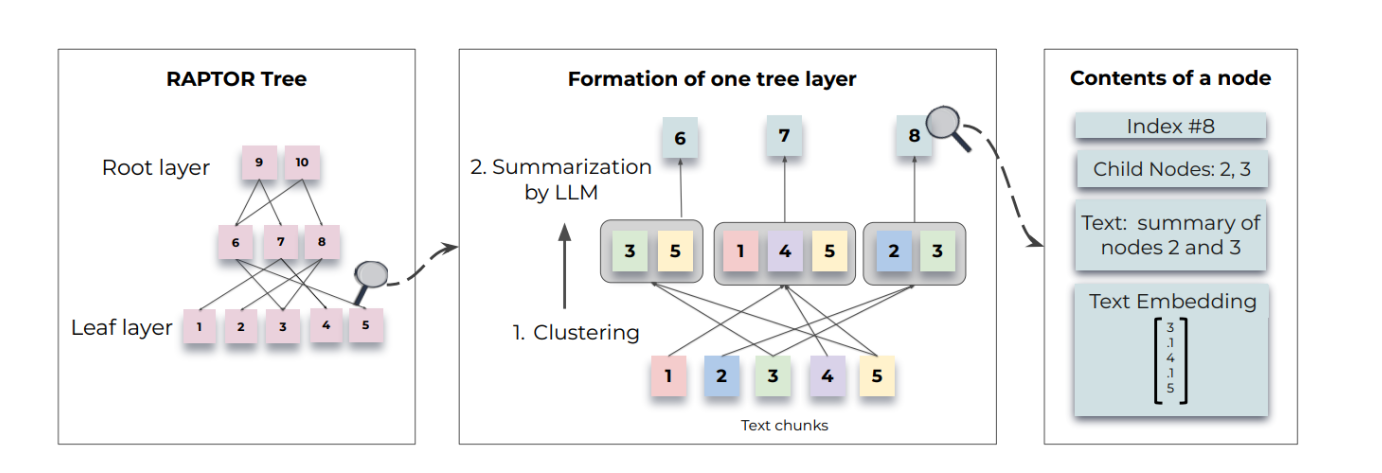【PaddleDetection】量化Picodet-NPU进行快速人头检测
基于Picodet-NPU实现快速人头检测
使用全量化的Picodet-NPU进行轻量化的人头检测

项目背景介绍
在新冠疫情的背景下,关于人群聚集时自动预警的项目越来越被重视,我刚好手头正在做这样一个项目。说大白话就是我们要实时的检测当前场景的人数,当达到一定数量时系统自动预警。
项目方案介绍
任务介绍
很显然,我们首要任务就是统计当前场景的人数,那么怎么统计人数呢?第一种方法是基于密度图生成的人群计数,其特点是在高密度场景下有着较高的准确率,但是低密度场景准确度较低。第二种方法是基于目标检测的方法,其特点是在低密度场景下有着较高的准确率,但是高密度场景漏检率较高。
显然在高密度的场景下,说明当前场景早已相当密集,那么早就应该要触发预警了。因此密度图并不适合用来做这个项目,那么我们的选择只剩下目标检测了。
相关方案调研
在Aistudio上找了一下人头技术相关的项目,找到了可能逃不了课了!如何使用PaddleX来点人头?。这是一篇很好的教学项目,但是该项目存在以下缺点:
- 使用的是老旧的检测模型
- 使用的数据集存在错误
- 不适合在嵌入式设备上部署
项目优势
针对相关方案调研中的问题,我做了针对性的改进
- 改进一: 原数据集存在部分错误,在使用PaddleDetection自带的数据集转换代码转换数据集时会报错。我对PaddleDetection转换数据集代码x2coco.py进行改进,现在转换时可以自动跳过数据集中错误的部分。
- 改进二: 该项目使用最新Picodet-NPU模型进行训练,适合在嵌入式设备上部署。
- 改进三: 新增了量化的步骤,对硬件更友好。
模型选型
要做目标检测,我们首先要选择合适的模型。在选择目标检测模型的过程中,我们要注意到,我们的目标是让项目落地。因此,我们最后是需要将模型跑到嵌入式设备上的,这就要求模型即要小,准确率又不能太低。这时,PaddleDetection自带的Picodet就成了很好的选择。可是Picodet也有很多种类型呀,我们该如何选择呢?
在PaddleDetection对Picodet的介绍中我们可以看到以下基线:
| 模型 | 输入尺寸 | mAPval 0.5:0.95 |
mAPval 0.5 |
参数量 (M) |
FLOPS (G) |
预测时延CPU (ms) |
预测时延Lite (ms) |
权重下载 | 配置文件 | 导出模型 |
|---|---|---|---|---|---|---|---|---|---|---|
| PicoDet-XS | 320*320 | 23.5 | 36.1 | 0.70 | 0.67 | 3.9ms | 7.81ms | model | log | config | w/ 后处理 | w/o 后处理 |
| PicoDet-XS | 416*416 | 26.2 | 39.3 | 0.70 | 1.13 | 6.1ms | 12.38ms | model | log | config | w/ 后处理 | w/o 后处理 |
| PicoDet-S | 320*320 | 29.1 | 43.4 | 1.18 | 0.97 | 4.8ms | 9.56ms | model | log | config | w/ 后处理 | w/o 后处理 |
| PicoDet-S | 416*416 | 32.5 | 47.6 | 1.18 | 1.65 | 6.6ms | 15.20ms | model | log | config | w/ 后处理 | w/o 后处理 |
| PicoDet-M | 320*320 | 34.4 | 50.0 | 3.46 | 2.57 | 8.2ms | 17.68ms | model | log | config | w/ 后处理 | w/o 后处理 |
| PicoDet-M | 416*416 | 37.5 | 53.4 | 3.46 | 4.34 | 12.7ms | 28.39ms | model | log | config | w/ 后处理 | w/o 后处理 |
| PicoDet-L | 320*320 | 36.1 | 52.0 | 5.80 | 4.20 | 11.5ms | 25.21ms | model | log | config | w/ 后处理 | w/o 后处理 |
| PicoDet-L | 416*416 | 39.4 | 55.7 | 5.80 | 7.10 | 20.7ms | 42.23ms | model | log | config | w/ 后处理 | w/o 后处理 |
| PicoDet-L | 640*640 | 42.6 | 59.2 | 5.80 | 16.81 | 62.5ms | 108.1ms | model | log | config | w/ 后处理 | w/o 后处理 |
以上的这些模型都是使用fp32精度运行的,当我们移植到嵌入式设备时(指RK系列),将使用fp16精度来跑模型,虽然精度损失不多,但这并不能使用到嵌入式设备的所有性能。别着急,这时候,继续往下翻,我们能找到以下基线:
| 模型 | 输入尺寸 | mAPval 0.5:0.95 |
mAPval 0.5 |
参数量 (M) |
FLOPS (G) |
预测时延CPU (ms) |
预测时延Lite (ms) |
权重下载 | 配置文件 |
|---|---|---|---|---|---|---|---|---|---|
| PicoDet-S-NPU | 416*416 | 30.1 | 44.2 | - | - | - | - | model | log | config |
PaddleDetection为了能在嵌入式边缘计算设备上使用NPU计算,推出了最新的Picodet-NPU,能够以int8类型在嵌入式设备上运行,并且跑出不错的效果。因此今天我们选择以这个模型来作为训练所使用的模型。
数据集
数据集介绍
数据集参考可能逃不了课了!如何使用PaddleX来点人头?,使用人头检测数据集来进行训练。为了使用int8类型在嵌入式设备上运行,我们最后是要对模型进行量化训练的。参考PP-PicoDet全量化示例我们可以知道,量化训练时,是以coco数据集作为输入对象的,因此我们需要将模型转换为coco格式。
对数据集进行的改进
在转换模型的过程中,我们发现数据集存在一定的错误,这显然会对模型最后的结果产生影响。我对PaddleDetection转换数据集代码x2coco.py进行改进,现在转换时可以自动跳过数据集中错误的部分,留下相对"干净"的数据集。
解压数据集
在转换coco格式之前,我们先需要先解压数据集
# 解压数据集请运行以下代码
# !unzip -qo ~/data/data168347/PaddleDetection-release-2.5.zip -d ~/work
!unzip -qo ~/data/data104969/SCUT_HEAD_Part_A_B.zip -d ~/work/PaddleDetection-release-2.5/dataset
划分数据集
在解压完数据集之后,我们还需要划分数据集,让程序知道,那些是训练用的图片,那些是验证用图片。
在这里,我参考可能逃不了课了!如何使用PaddleX来点人头?使用paddlex进行划分数据集,但是还需要做一些小小的修改。
由config配置中的coco_detection可以看到,picodet测试集和验证集用的是同一个json文件,因此这里对划分方式进行了修改,将训练集:验证集:测试集改成了8:2:0的比例。
!pip install paddlex==2.0rc
%cd ~/work/PaddleDetection-release-2.5
!paddlex --split_dataset --format VOC --dataset_dir ./dataset/MyDataset --val_value 0.2
转换数据集格式
接下来,我们参考如何准备训练数据对数据集格式进行转换。
在转换数据集时,由于原数据集存在错误,在转换时是不会被通过的,因此我们对tools/x2coco.py进行了修改,现在的代码将自动跳过错误的xml文件。
代码修改的地方贴在下面了,有兴趣的同学可以看看:
def voc_get_coco_annotation(obj, label2id):
label = obj.findtext('name')
assert label in label2id, "label is not in label2id."
category_id = label2id[label]
bndbox = obj.find('bndbox')
xmin = float(bndbox.findtext('xmin'))
ymin = float(bndbox.findtext('ymin'))
xmax = float(bndbox.findtext('xmax'))
ymax = float(bndbox.findtext('ymax'))
if not (xmax > xmin and ymax > ymin):
print("Box size error.max:{} xmin:{} ymax:{} ymin:{}".format(xmax,xmin,ymax,ymin))
return None
o_width = xmax - xmin
o_height = ymax - ymin
anno = {
'area': o_width * o_height,
'iscrowd': 0,
'bbox': [xmin, ymin, o_width, o_height],
'category_id': category_id,
'ignore': 0,
}
return anno
def voc_xmls_to_cocojson(annotation_paths, label2id, output_dir, output_file):
output_json_dict = {
"images": [],
"type": "instances",
"annotations": [],
"categories": []
}
bnd_id = 1 # bounding box start id
im_id = 0
print('Start converting !')
for a_path in tqdm(annotation_paths):
# Read annotation xml
ann_tree = ET.parse(a_path)
ann_root = ann_tree.getroot()
img_info = voc_get_image_info(ann_root, im_id)
img_info['file_name'] = os.path.basename(a_path).split(".")[0] + ".jpg"
is_ok = True
ann_list = []
for obj in ann_root.findall('object'):
ann = voc_get_coco_annotation(obj=obj, label2id=label2id)
if ann is None:
is_ok = False
break
ann.update({'image_id': im_id, 'id': bnd_id})
bnd_id = bnd_id + 1
ann_list.append(ann.copy())
if is_ok:
output_json_dict['images'].append(img_info)
im_id += 1
for ann in ann_list:
output_json_dict['annotations'].append(ann)
for label, label_id in label2id.items():
category_info = {'supercategory': 'none', 'id': label_id, 'name': label}
output_json_dict['categories'].append(category_info)
output_file = os.path.join(output_dir, output_file)
with open(output_file, 'w') as f:
output_json = json.dumps(output_json_dict)
f.write(output_json)
print(bnd_id)
%cd ~/work/PaddleDetection-release-2.5
# 转换训练集文件
!python tools/x2coco.py \
--dataset_type voc \
--voc_anno_dir ./dataset/MyDataset/ \
--voc_anno_list ./dataset/MyDataset/train_list.txt \
--voc_label_list ./dataset/MyDataset/labels.txt \
--voc_out_name ./dataset/MyDataset/voc_train.json
# 转换验证集文件
!python tools/x2coco.py \
--dataset_type voc \
--voc_anno_dir ./dataset/MyDataset/ \
--voc_anno_list ./dataset/MyDataset/val_list.txt \
--voc_label_list ./dataset/MyDataset/labels.txt \
--voc_out_name ./dataset/MyDataset/voc_val.json
训练
参考PP-PicoDet全量化示例,我们的训练将分为四个部分:训练全精度模型 -> 评估全精度模型 -> 量化训练 -> 评估量化模型。
安装PaddleDetection
在正式开始训练之前,我们需要参考PaddleDetection安装文档安装一下需要的环境。
# 安装其他依赖
%cd ~/work/PaddleDetection-release-2.5
!pip install -r requirements.txt
# 编译安装paddledet
!python setup.py install
修改配置文件
修改coco_detection.yml
训练前,我们要修改configs/datasets/coco_detection.yml,让程序能够读取到我们的数据集。
metric: COCO
num_classes: 1
TrainDataset:
!COCODataSet
image_dir: JPEGImages
anno_path: voc_train.json
dataset_dir: dataset/MyDataset
data_fields: ['image', 'gt_bbox', 'gt_class', 'is_crowd']
EvalDataset:
!COCODataSet
image_dir: JPEGImages
anno_path: voc_val.json
dataset_dir: dataset/MyDataset
TestDataset:
!ImageFolder
anno_path: voc_val.json # also support txt (like VOC's label_list.txt)
dataset_dir: dataset/MyDataset # if set, anno_path will be 'dataset_dir/anno_path'
修改picodet_s_416_coco_npu.yml
我们还需要修改picodet_s_416_coco_npu的配置文件./configs/picodet/picodet_s_416_coco_npu.yml
- 为了更快的训练,我们还需要修改batch-size,我这里跑64报错,因此改成一个batch读取32张图片
- 注意: !!!如果你是使用1卡进行训练还需要将学习率/4!!!
我这里使用的是1卡,这是修改完后的样子:
_BASE_: [
'../datasets/coco_detection.yml',
'../runtime.yml',
'_base_/picodet_v2.yml',
'_base_/optimizer_300e.yml',
]
pretrain_weights: https://paddle-imagenet-models-name.bj.bcebos.com/dygraph/legendary_models/PPLCNet_x0_75_pretrained.pdparams
weights: ./output/picodet_s_416_coco_npu/best_model.pdparams
find_unused_parameters: True
keep_best_weight: True
use_ema: True
epoch: 300
snapshot_epoch: 10
PicoDet:
backbone: LCNet
neck: CSPPAN
head: PicoHeadV2
LCNet:
scale: 0.75
feature_maps: [3, 4, 5]
act: relu6
CSPPAN:
out_channels: 96
use_depthwise: True
num_csp_blocks: 1
num_features: 4
act: relu6
PicoHeadV2:
conv_feat:
name: PicoFeat
feat_in: 96
feat_out: 96
num_convs: 4
num_fpn_stride: 4
norm_type: bn
share_cls_reg: True
use_se: True
act: relu6
feat_in_chan: 96
act: relu6
LearningRate:
base_lr: 0.2
schedulers:
- !CosineDecay
max_epochs: 300
min_lr_ratio: 0.08
last_plateau_epochs: 30
- !ExpWarmup
epochs: 2
worker_num: 4
eval_height: &eval_height 416
eval_width: &eval_width 416
eval_size: &eval_size [*eval_height, *eval_width]
TrainReader:
sample_transforms:
- Decode: {}
- Mosaic:
prob: 0.6
input_dim: [640, 640]
degrees: [-10, 10]
scale: [0.1, 2.0]
shear: [-2, 2]
translate: [-0.1, 0.1]
enable_mixup: True
- AugmentHSV: {is_bgr: False, hgain: 5, sgain: 30, vgain: 30}
- RandomFlip: {prob: 0.5}
batch_transforms:
- BatchRandomResize: {target_size: [320, 352, 384, 416, 448, 480, 512], random_size: True, random_interp: True, keep_ratio: False}
- NormalizeImage: {mean: [0, 0, 0], std: [1, 1, 1], is_scale: True}
- Permute: {}
- PadGT: {}
batch_size: 32
shuffle: true
drop_last: true
mosaic_epoch: 180
EvalReader:
sample_transforms:
- Decode: {}
- Resize: {interp: 2, target_size: *eval_size, keep_ratio: False}
- NormalizeImage: {mean: [0, 0, 0], std: [1, 1, 1], is_scale: True}
- Permute: {}
batch_transforms:
- PadBatch: {pad_to_stride: 32}
batch_size: 8
shuffle: false
TestReader:
inputs_def:
image_shape: [1, 3, *eval_height, *eval_width]
sample_transforms:
- Decode: {}
- Resize: {interp: 2, target_size: *eval_size, keep_ratio: False}
- NormalizeImage: {mean: [0, 0, 0], std: [1, 1, 1], is_scale: True}
- Permute: {}
batch_size: 1
对PaddleDetection代码做出的修改
修改operators.py
由于数据集标注有部分漏洞,训练时会一直提示警告,很烦,建议关掉,方法是修改文件[ppdet/data/transform/operators.py]中的这段话
class Decode(BaseOperator):
def __init__(self):
""" Transform the image data to numpy format following the rgb format
"""
super(Decode, self).__init__()
def apply(self, sample, context=None):
""" load image if 'im_file' field is not empty but 'image' is"""
if 'image' not in sample:
with open(sample['im_file'], 'rb') as f:
sample['image'] = f.read()
sample.pop('im_file')
try:
im = sample['image']
data = np.frombuffer(im, dtype='uint8')
im = cv2.imdecode(data, 1) # BGR mode, but need RGB mode
if 'keep_ori_im' in sample and sample['keep_ori_im']:
sample['ori_image'] = im
im = cv2.cvtColor(im, cv2.COLOR_BGR2RGB)
except:
im = sample['image']
sample['image'] = im
if 'h' not in sample:
sample['h'] = im.shape[0]
elif sample['h'] != im.shape[0]:
# logger.warning(
# "The actual image height: {} is not equal to the "
# "height: {} in annotation, and update sample['h'] by actual "
# "image height.".format(im.shape[0], sample['h']))
sample['h'] = im.shape[0]
if 'w' not in sample:
sample['w'] = im.shape[1]
elif sample['w'] != im.shape[1]:
# logger.warning(
# "The actual image width: {} is not equal to the "
# "width: {} in annotation, and update sample['w'] by actual "
# "image width.".format(im.shape[1], sample['w']))
sample['w'] = im.shape[1]
sample['im_shape'] = np.array(im.shape[:2], dtype=np.float32)
sample['scale_factor'] = np.array([1., 1.], dtype=np.float32)
return sample
训练全精度模型
%cd ~/work/PaddleDetection-release-2.5
# 单卡训练
# training on single-GPU
# 注意:请修改学习率为0.05
# !export CUDA_VISIBLE_DEVICES=0
# !python tools/train.py -c configs/picodet/picodet_s_416_coco_npu.yml \
# --eval \
# --use_vdl=true \
# --vdl_log_dir=vdl_dir/scalar
# 多卡训练
# training on multi-GPU
# 注意:请修改学习率为0.2
!export CUDA_VISIBLE_DEVICES=0,1,2,3
!python -m paddle.distributed.launch --gpus 0,1,2,3 \
tools/train.py \
-c configs/picodet/picodet_s_416_coco_npu.yml \
--eval \
--vdl_log_dir=vdl_dir/scalar
模型验证
训练完成之后,我们要验证一下我们的模型精度有多高。以下是我训练出来的模型精度
| 模型 | 输入尺寸 | mAPval 0.5:0.95 |
mAPval 0.5 |
|---|---|---|---|
| PicoDet-S-NPU | 416*416 | 35.6 | 78.2 |
!python tools/eval.py -c configs/picodet/picodet_s_416_coco_npu.yml \
-o weights=./output/picodet_s_416_coco_npu/best_model.pdparams
使用训练好的模型进行推理
验证完成后,我们可以尝试使用我们训练好的模型进行推理。以下是我训练完成之后,运行的推理结果:
可以看到,效果还是很不错的,教室内的人头大部分都被检测出来了。
%cd ~/work/PaddleDetection-release-2.5
!python tools/infer.py -c configs/picodet/picodet_s_416_coco_npu.yml \
-o use_gpu=true \
--infer_img=./2.jpeg
导出预测模型
使用如下命令,导出Inference模型,用于全量化训练。导出模型默认存放在output_inference文件夹,包括*.pdmodel和*.pdiparams文件,用于全量化。
%cd ~/work/PaddleDetection-release-2.5
!python tools/export_model.py \
-c configs/picodet/picodet_s_416_coco_npu.yml \
-o weights=./output/picodet_s_416_coco_npu/best_model.pdparams \
对模型进行量化
参考全量化训练,训练完模型之后,我们要对模型进行量化,把模型从fp32格式转换成int8格式。
安装量化所需要的包
!pip install pyzmq==18.1.1
!pip install paddleslim==2.3.0
# !pip install paddledet==2.4.0
修改量化配置文件
修改picodet_reader.yml
要进行量化我们首先要修改配置文件deploy/auto_compression/configs/picodet_reader.yml,让系统能够读取到数据集
metric: COCO
num_classes: 1
# Datset configuration
TrainDataset:
!COCODataSet
image_dir: JPEGImages
anno_path: voc_train.json
dataset_dir: ./dataset/MyDataset
EvalDataset:
!COCODataSet
image_dir: JPEGImages
anno_path: voc_val.json
dataset_dir: ./dataset/MyDataset
worker_num: 6
eval_height: &eval_height 416
eval_width: &eval_width 416
eval_size: &eval_size [*eval_height, *eval_width]
EvalReader:
sample_transforms:
- Decode: {}
- Resize: {interp: 2, target_size: *eval_size, keep_ratio: False}
- NormalizeImage: {mean: [0, 0, 0], std: [1, 1, 1], is_scale: True}
- Permute: {}
batch_transforms:
- PadBatch: {pad_to_stride: 32}
batch_size: 8
shuffle: false
修改之后,我们要把这个文件移动到PaddleDetection的目录下
%cd ~/work/PaddleDetection-release-2.5
!cp ./deploy/auto_compression/configs/picodet_reader.yml ./configs
修改picodet_s_qat_dis.yaml
修改完picodet_reader.yml,我们还需要修改deploy/auto_compression/configs/picodet_s_qat_dis.yaml,让系统能够读取到模型数据,这是我修改以后的配置。
Global:
reader_config: ./configs/picodet_reader.yml
input_list: ['image', 'scale_factor']
Evaluation: True
model_dir: output_inference/picodet_s_416_coco_npu
model_filename: model.pdmodel
params_filename: model.pdiparams
Distillation:
alpha: 1.0
loss: l2
Quantization:
use_pact: true
activation_quantize_type: 'moving_average_abs_max'
weight_bits: 8
activation_bits: 8
quantize_op_types:
- conv2d
- depthwise_conv2d
TrainConfig:
train_iter: 8000
eval_iter: 1000
learning_rate:
type: CosineAnnealingDecay
learning_rate: 0.00001
T_max: 8000
optimizer_builder:
optimizer:
type: SGD
weight_decay: 4.0e-05
开始量化
%cd ~/work/PaddleDetection-release-2.5
!export CUDA_VISIBLE_DEVICES=0
!python ./deploy/auto_compression/run.py --config_path=./deploy/auto_compression/configs/picodet_s_qat_dis.yaml \
--save_dir='./output/'
量化后的评估
进行量化以后,我们还需要对精度进行评估。
再次修改picodet_s_qat_dis.yaml
量化以后的模型位置变了,因此评估之前还需要对deploy/auto_compression/configs/picodet_s_qat_dis.yaml进行修改,我的配置如下:
Global:
reader_config: ./configs/picodet_reader.yml
input_list: ['image', 'scale_factor']
Evaluation: True
model_dir: output
model_filename: model.pdmodel
params_filename: model.pdiparams
Distillation:
alpha: 1.0
loss: l2
Quantization:
use_pact: true
activation_quantize_type: 'moving_average_abs_max'
weight_bits: 8
activation_bits: 8
quantize_op_types:
- conv2d
- depthwise_conv2d
TrainConfig:
train_iter: 8000
eval_iter: 1000
learning_rate:
type: CosineAnnealingDecay
learning_rate: 0.00001
T_max: 8000
optimizer_builder:
optimizer:
type: SGD
weight_decay: 4.0e-05
评估验证集
!export CUDA_VISIBLE_DEVICES=0
!python ./deploy/auto_compression/eval.py --config_path=./deploy/auto_compression/configs/picodet_s_qat_dis.yaml
更新日志
V0.0 -> 2022-09-11
- 初步更新第一个最基础版本的训练代码
- 添加多GPU训练的方法
V0.1 -> 2022-09-11
- 修复数据集分割时的错误
- 新增量化训练代码
V0.2 -> 2022-09-11
- 新增量化训练代码
总结
我们使用Picodet-NPU完成了初步的训练,并且得到了不错的效果。虽然训练出来的模型在验证集上的效果看上去还不错,map0.5也达到了78.2%。但是,这部分结果实际上存在一定的泡沫的,因为验证结果只是针对这个数据集而言的,实际效果其实还有待提高。
例如我们输入以下图片:

我们将得到输出图片:

看到鸡你太美,模型就被"迷住了",把篮球也认为是一个人头,而且准确率高达80%。这说明原数据集的训练场景不够多,导致模型存在一定的过拟合,后期将尝试更新更大的数据集来进行训练。
请点击此处查看本环境基本用法.
Please click here for more detailed instructions.
此文章为搬运
原项目链接
更多推荐
 已为社区贡献1436条内容
已为社区贡献1436条内容










所有评论(0)